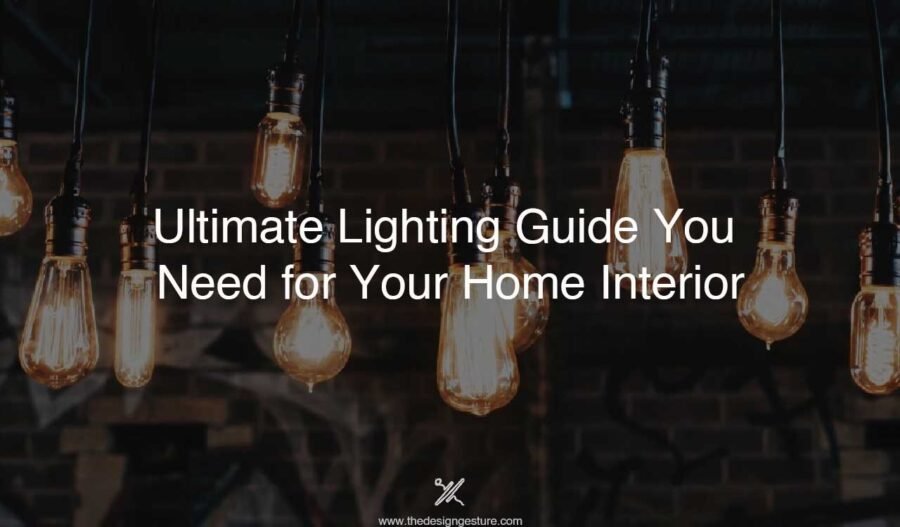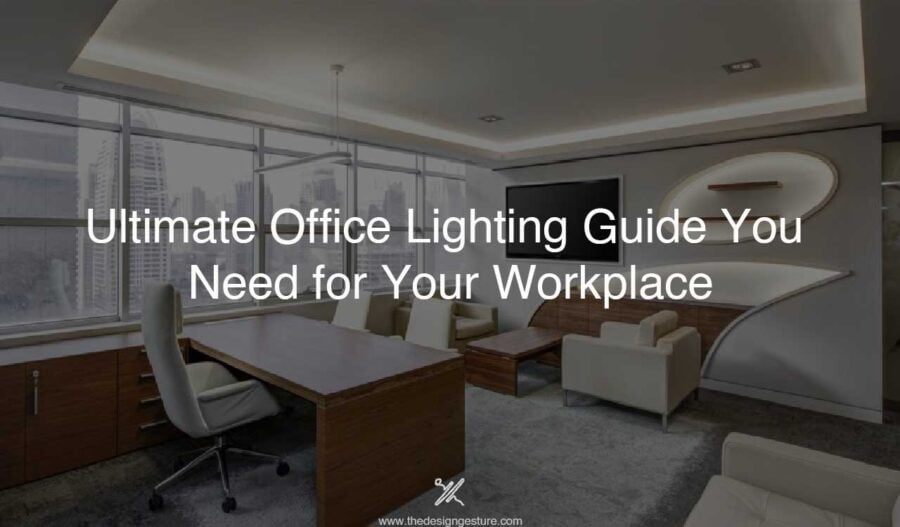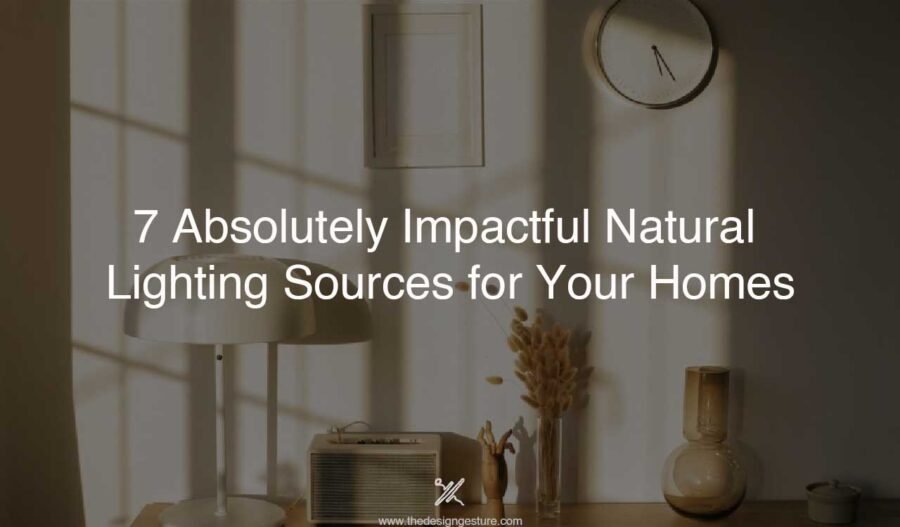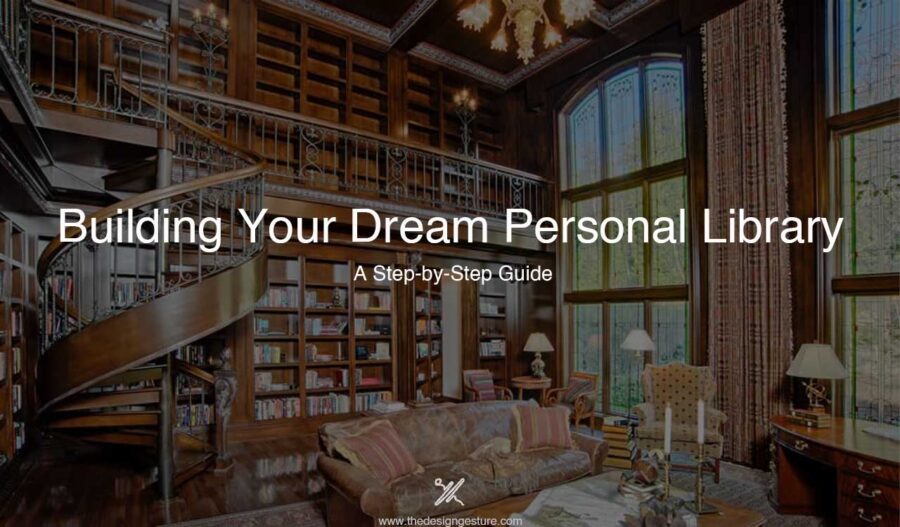Lighting has a deeper impact on our moods and emotions. Lighting can create visual stimulation and put emphasis on a specific feature of your home, you want to highlight.
Lighting for home decor is a very underrated feature of any interior design project. Whereas lighting, if done correctly, can amplify the interior of your home even more.
Choosing the right light fixture types for your room décors can be confusing. So, we have here an ultimate lighting guide that will help you in deciding while finalizing your lighting décor.
Table of Contents
Types of Lighting
There are 3 major categories of lighting.
Ambient/General Lighting
As the name suggests, general/ ambient light illuminates the space to make everything visible. Typically, this type of light provides suitable illumination with a broader overhead light cast in lighting for home decor.
Ambient Light Fixture Types
- Ceiling lamp
- Wall-mounted lamp
- Recessed or downlight fixture
- Track light
- Floor lamp
- Table lamp
- Chandelier
Task Lighting
Task lighting helps in carrying out specific tasks like reading, sewing, cooking, studying, and working. This type of lighting gives you an option to adjust the lighting of your space as per your needs.
Task lights should be bright enough to avoid eye-straining and they should be positioned in a way that it doesn’t cast distracting shadows.
While selecting a perfect task light, keep in mind the activity you need it for and also the age of the person it is for. The glare and harshness affect our eyes as we grow older.
Task Light Fixture Types
- Recessed or downlight fixture
- Pendant lighting
- Portable lamp
- Tape and track lights
- Slim line bar and under cabinet
Accent Lighting
Accent lights are used to highlight specific features or elements in a space. It adds a dramatic effect to the room. This lighting can change the mood of the space completely. The best example is the spotlights used over a painting.
Accent lights should direct at least three times as much light on the focal point as compared to the rest of the space. If done right, this accentuates the focal point subtly.
Types of Accent Light Fixture Types
- Track light
- Wall-mounted fixtures
- Slim line bar and under cabinet
- Recessed or downlight fixture
Choose the Right Light Bulb
There are three types of light bulbs you can choose from; LEDs, CFLs, and Halogen.
LED (Light Emitting Diode) uses 90% less energy than incandescent lights. The last 25 times longer than halogen and three times longer than CFLs and are pocket-friendly. LEDs are 100% recyclable and cooler to the touch.
CFL (Compact Fluorescent Light) is more energy-efficient and less hot than incandescent light. But it has a shorter lifespan than LEDs. They fade over time and reduce their illuminance. CFL contains mercury, so one has to be very careful while disposing of it.
Halogen is more energy-efficient than incandescent light but less than both LED and CFL. Its cost of running and lifetime cost, both are very high.
LED bulbs will be the ideal choice of light today. Along with being an energy-efficient and economical option, LED has a vast variety of lighting effects, perfect and different for every room. With the entry of smart led bulbs, the lighting solutions have changed drastically.
Colour Temperature
The Colour Temperature of light can extensively effect in setting the mood of the room.
CCT (Correlated Colour Temperature) is the measure of the light’s colour appearance. Light is differentiated into three distinct categories (measured in Kelvin)
Warm
Neutral
Cool

Warm Light
It fills the space with a cozy, relaxed atmosphere, perfect for bedrooms and living areas.
Neutral Light
Neutral light is used in spaces where more concentration on the work is required, like the kitchen.
Cool Light
This light works best in spaces that need some additional focus like reading or working area or a bathroom.
Lighting Guide
Lighting should be planned and incorporated in the initial design stage. The type of light used will depend on the experience you want to create.
These factors need to be considered while lighting for home decor:
- Size and utility of the room
- Ceiling height
- Colour of the furniture and the walls
- Age and preferences of the occupant
More often than not, a good lighting design is a combination of all three types of lighting. (General, task, and accent)
Entrance

The entrance should give a warm, welcoming feeling and a good first impression.
- A pendant light or a chandelier at the doorway can create a dramatic impact.
- If you have a console table, add a table lamp.
- Adding a mirror above the console will create an illusion of a larger entrance hallway.
- Even if you have a smaller hallway, a mirror and a downlight always help in elevating the space.
- If you are placing are artworks, use suitable accent light fixture types for them.
- Make sure that it does not create high contrast shadows.
Kitchen

The kitchen is a very active space where all the food preparation takes place. It is also a gathering spot. As you handle several utensils, some of them sharp, shadow-free, sharp lighting is exactly what you need. The lighting decor for kitchen requires a perfect consideration of task and ambient lighting.
- Install LED strips on the wall units.
- Illuminate the countertop using undercabinet.
- Provide pendant light for the kitchen island or breakfast bar.
Dining Area
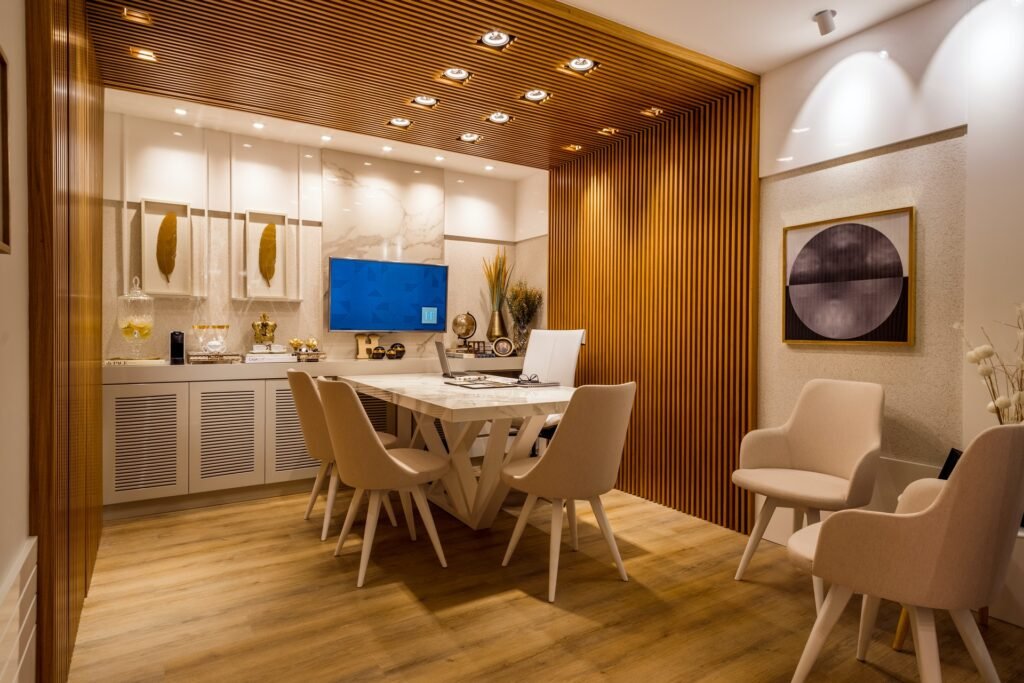
The dining area is more than just a place to eat. It is also a place for entertaining and socializing. It has the potential to be the most aesthetic part of your home, so invest in good fixtures.
- Most people make the mistake of placing a chandelier above the table and keeping it as the only source of light.
- Adding layers with wall scones, pendant light, etc can enhance the ambience of the space.
- Install dimmers to control the illuminance level.
- Mount undercabinet light to highlight your China cabinet.
Living Room

The living room is an all-purpose area where you will watch TV, read books and chat with friends and family. The lighting decor for living room needs to be more diverse, to reflect the tasks that are carried out in the room. As we spent most of our time in living rooms, the lighting in this room has to be suitable for your scheme of work.
- The lighting needs to a perfect combination of all lighting and light fixture types.
- Use multiple lighting layers with dimmable light.
- Use portable lighting for more flexibility and control.
- Use wall washing for bookshelves and artwork to make the space seem more spacious and luxurious.
- For the sofa/TV area, uniform indirect light is recommended, so as not to affect the vision or cause annoying reflections on the TV screen.
Bathroom

Bathroom lighting should emphasize more on safety and aesthetics. It requires careful consideration of lighting placement.
- Light both sides of the mirror. Vanity lighting is perfect to light up the mirror.
- Make sure neutral or cool light is directed towards your face.
- If you have a small bathroom, go for wall mounted light fixture types.
- Ambient lighting, wall scones and recessed lighting work well in a bathroom.
- If you have a tub, add dimmable lights over the head area.
Bedroom

The light in the bedroom cannot be the same as in a kitchen or a home office. As a general rule, the lighting scheme should be definitely warmer and cozier. On both sides of the bed, there should be no more than a 1-Watt adjustable light source, allowing you to read or get up at night without disturbing your partner.
- Consider the scale and height of the room.
- Use direct lighting for desks, vanities, etc.
- Consider coloured bulbs to change the mood.
- Install dimmers and other lighting controls.
- Create ambient light with downlights and pendant fixtures.
- Control glare for tasks like reading.
- Consider lights that can be changed from up light to downlight.
- Try to use light bulbs of lower wattage.
- Don’t install lights directly over the bed.
- Use softer, shaded fixtures for sitting areas.
- Use flexible lamps for your reading light.
Kid’s Room
While choosing the light scheme for your kid’s room, keep in mind the age and gender of your child.
If your child is a toddler, ensure that the light fixtures cannot be touched.

